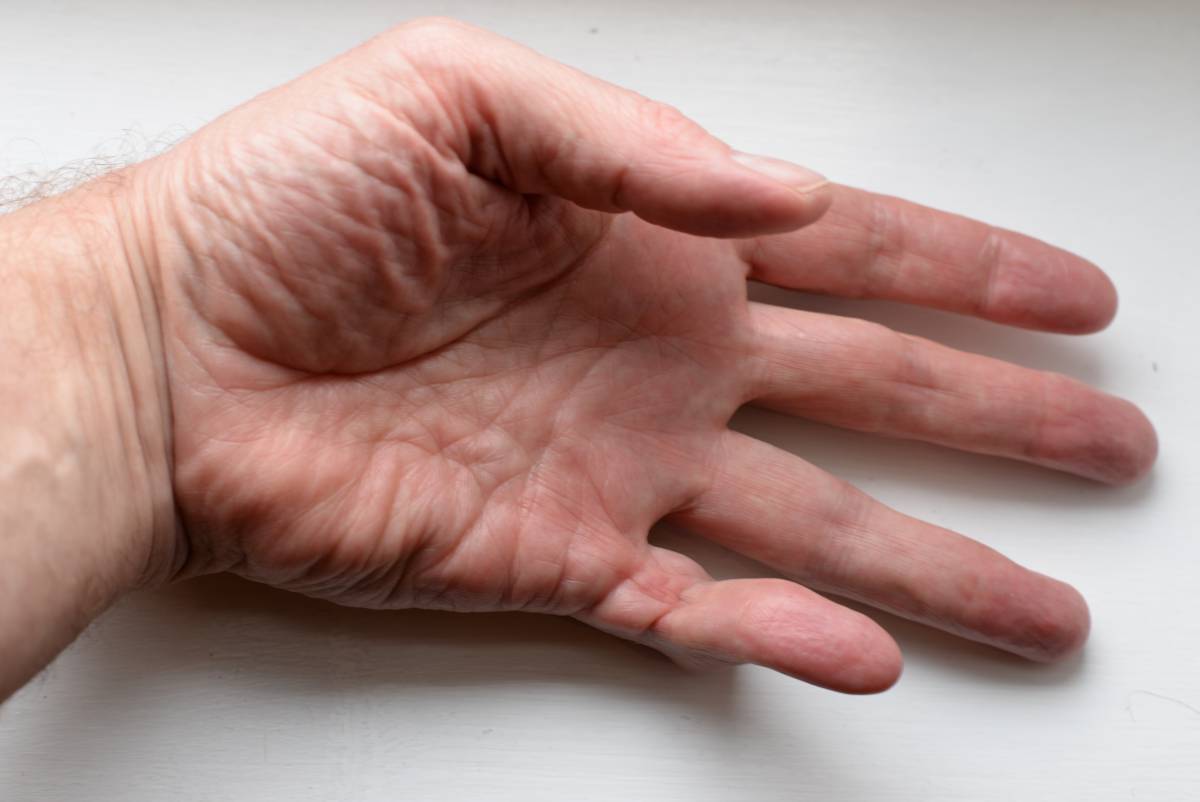Consultant physio Fiona Sandford co-writes paper highlighting non-surgical Dupuytren's therapies
Consultant physiotherapist Fiona Sandford has contributed to a multidisciplinary article that examines the evidence for giving hand therapy for Dupuytren’s disease before surgery.
Published in Hand Therapy journal in January, the article was written by a five-person team led by Joep Jannick Fernando, an occupational therapist (OT) who, like Ms Sandford, is based at the Department of Hand Therapy at Guy’s and St Thomas’ Hospitals NHS Trust in London.
It is estimated that more than five million people in the UK aged over 50 years have Dupuytren’s, a fibroproliferative disorder of the hand having a heterogenous pathogenesis. It is most commonly found among men, and in those living in western Europe.
Up to one person with the condition in three (20-35 per cent) has progressive symptoms, with a surgical intervention being seen as the ‘gold standard’ – and most widely prescribed – NHS treatment in advanced cases.
From 2007-2017, 121,488 people with Dupuytren’s in England underwent percutaneous needle fasciotomy, limited fasciectomy or dermofasciectomy, Mr Fernando and his colleagues note.
Almost one in four reportedly had complications after surgery, such as infection, injury to tendons or nerves, finger amputation and systemic operative complications. After surgical intervention, the disease recurred in from 18-34 per cent of cases.
Challenging the 'dogma'
The authors note that a recent review estimated that about four million people in the UK with Dupuytren’s are experiencing functional limitation, but do not meet the criteria to access interventions as currently provided.
‘The dogma that non-surgical hand therapy intervention is ineffective is commonly cited as the reason to not provide treatment,’ the team notes.
‘With growing waitlists, significant operative risks, and the sizeable population experiencing disability with the disease who do not meet requirements for surgery, evaluation of non-surgical treatments is required.’
Mr Fernando and his colleagues looked at 17 studies and focused on interventions including
- extracorporeal shockwave therapy
- corticosteroid injection
- splinting, massage and stretching
- ultrasound therapy
- temperature controlled high energy adjustable laser (THEAL)
They note that extracorporeal shockwave therapy ‘positively maintained or improved pain, active range of motion, disabilities of the arm shoulder, and hand (DASH) [disabilities of the arm, shoulder and hand] scores, and grip strength’.
Elsewhere, the authors found that ultrasound therapy ‘positively maintained or improved’ range of movement and grip, while splinting positively maintained or improved range of movement and corticosteroid injection positively improved nodule size. Cross frictional massage had a positive impacted active range of motion and THEAL improved pain and DASH scores.
Prevention is the goal
In their discussion, they note: ‘In the essential shift towards preventative healthcare models set out in the NHS Long Term Plan individualised patient care and encouraging maintenance of economic and social productivity in a growing ageing population, the need to provide alternatives to the surgical pathway is clear.
They continue: ‘It must be considered that in a known progressive disease, the positive outcomes of intervention may improve participants’ symptoms but also maintaining the current level of function and symptoms demonstrates the ability to delay the progression of the disease. This may avert the need for surgical intervention and associated complications, especially as participants were shown to have maintained improvement in symptoms.’
The evidence for the majority of participants undergoing conservative modalities indicated maintenance or improvement in symptoms, however the strength of the evidence [means that] further high-quality research is needed to see the long-term effect and cost of the interventions [Joep Jannick Fernando et al]
Caveats and conclusions
The authors acknowledge that, due to resource limitations, their systematic review only focused on reports that were available in the English language. ‘Reports were not excluded on the premise of our inclusion criteria, to widely evaluate non-surgical intervention outcomes on those with early to mid-stage DD [Dupuytren’s disease].’ While they identified three randomised controlled trials, constituting ‘level 1 evidence’, most studies meeting the inclusion criteria were at level 4 and 5 (case series, reports).
Mr Fernando and his colleagues conclude: ‘This systematic review recognises the range of non-surgical treatment modalities for individuals with Dupuytren’s Disease in the early stages.'
They add: ‘The evidence for the majority of participants undergoing conservative modalities indicated maintenance or improvement in symptoms, however the strength of the evidence remains largely that of level 4 and 5, and further high-quality research is needed to see the long-term effect and cost of the interventions.’
Co-author Christy Fowler, an OT, was named Hand Therapist of the Year at last autumn's British Association of Hand Therapists (BAHT) annual conference. To read a PhysioUpdate article on her award, click
To access the full version of the article in Hand Therapy – titled Pre-operative hand therapy management of Dupuytren’s disease: A systematic review – click
Author: I A McMillan














